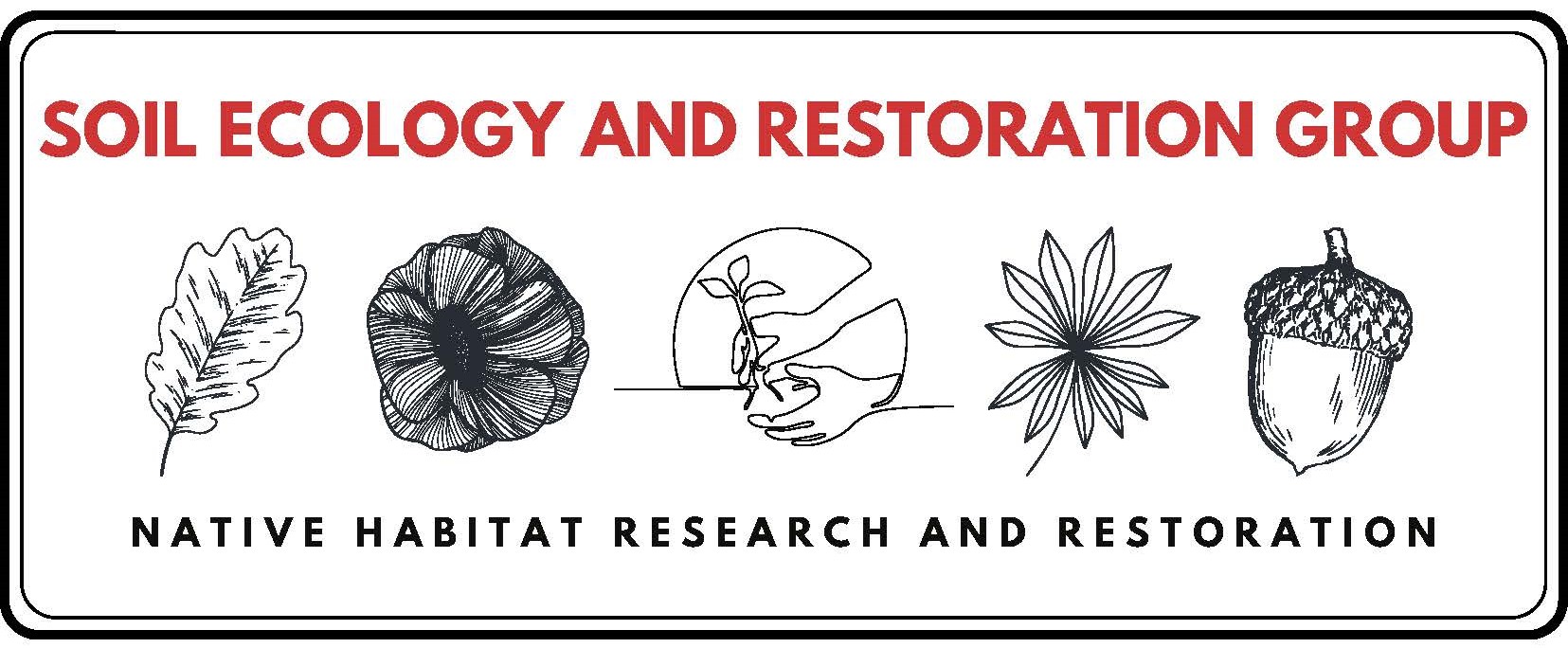PROJECT OVERVIEW
INTRODUCTION
This proposal is part of a 5-year long restoration effort of Alvarado Creek by Soil Ecology and Restoration Group (SERG) and San Diego State University (SDSU). While non-native vegetation has been removed from the area under separate funding from the San Diego River Conservancy (Conservancy) in Fall 2020, invasive vegetation has regrown. In particular, giant reed (Arundo donax) and mustards were noted in Spring 2021. Non-native tree removal occurred in stages over the many years starting with Upper Reach 1 located along Alvarado Road east of College Avenue and south of Interstate 8 from 2016 to 2019.
Currently, the creek is less constricted by vegetation and debris and the channel width has widened due to enhanced flow from winter storms as a result of the removal of debris and vegetation barriers.
Since San Diego has a Mediterranean-type climate, Alvarado Creek responds quickly during precipitation events with large streamflows that materialize and recede rapidly. Alvarado Creek follows a step-pool morphology, where there are a series of steps with shallow and high velocity flows and pools with deep and slow streamflows. The average stream slope in the study channel section is 0.076%. The surrounding upland slopes within the study area vary from about 10% to 30%. The site generally contains hard and compacted soil, mixed cobbles on the upland slopes and sandy riverwash toward the channel area.
The proposed section of creek for restoration is approximately 200 meters. Alvarado Creek enters the Project area after flowing approximately 762 meters through a natural area from a concrete culvert that routes the creek under the Interstate-8 Highway. Approximately 120 meters from the downstream boundary of the study area, Alvarado Creek is routed into a 9-meter-wide concrete channel in which it is conveyed to the San Diego River.
PROJECT SUMMARY
This Project will protect wetland resources by improving riparian ecosystem functions through the restoration of Alvarado Creek. The goal is to restore three acres by planting approximately 2,000 native
riparian and upland species where invasive non-native vegetation has been removed and where native seedling recruitment was not successful. 1,500 native riparian species will be planted along the creek, and 500 upland species will be planted on the hillslope between the residences of the Smoke Tree Home Owners Association (HOA) and the creek. Restoration efforts will protect the natural hydro-
geomorphic processes which contribute to healthier habitat for fish and wildlife.
Another component of the proposed Project is to control fire fuel vegetation, such as eucalyptus trees, palm trees, and giant reed. The restoration area is adjacent to residences in the Del Cerro area of San
Diego, and these activities will reduce fire risk. Revegetation will restore the intrinsic benefits of plant biomass for reducing and removing nutrients and other pollutants through uptake and sorption. Revegetation will support processes such as nitrogen mineralization, nitrification, and denitrification, all of which contribute to improvements in surface water quality.
Revegetation of the riparian zone with native species is anticipated to alleviate temporary disturbance caused by non-native vegetation removal. In urban catchments, revegetation is expected to have
important positive impacts on water quality through interactions between surface flow, flooding, plant nitrogen uptake, and transformation. Even short-term revegetation has been shown to increase mineralization, nitrification, and denitrification, all of which contributed to decreased soil inorganic nitrogen concentrations, with potential improvements in surface water quality. Riparian buffers have
also been shown to be effective for phosphorus removal due to greater sorption of phosphorus in grass and forest-dominated soils compared to other land use types.
The proposed Project includes water studies and biological assessments will support the revegetation effort, focusing on water availability pre- and post-revegetation and evaluate improvements and
changes to water quality of Alvarado Creek. The proposed Project will achieve resource protection by conducting regular weed control activities and by converting a disturbed riparian community to a native riparian community.
Although no official wildlife surveys were conducted at the site, few native animal species were observed while conducting work previously. Since the removal of the non-native vegetation SDSU’s
Soil and Ecology Restoration Group have regularly observed native fauna, such as black phoebe and mallards, at this location. The installation of native riparian plants will contribute to increasing native wildlife presence by adding perching, foraging, and nesting habitat. Native trees have been shown to support a much higher number of native insects than non-native trees, and will thus increase bird and mammal diversity.
MEASUREABLE RESULTS
The project plans to restore a section of Alvarado Creek by revegetating the area where non-native plant species were removed. Unfortunately, native trees and other native species were not present in enough numbers to recruit (which is now mostly bare). The revegetation of this section of Alvarado Creek is necessary to restore areas devoid of vegetation to reduce erosion and sediment entering the creek.
Parallel channels flanked by Arundo donax were observed causing undercutting, bank collapse, and lateral migration. These processes are exacerbated in flashy semi-arid hydrologic systems after fire,
suggesting that the geomorphic impacts extend beyond the immediate vegetation.
The elevation disparity between the main channel of Alvarado Creek and the surrounding floodplain may also promote the desiccation of the riparian area due to a lowered water table. This is exacerbated
by the extreme demand on water resources by Arundo donax stands further contributing to the aridification of the riparian environment and promoting the grass-fire feedback.
The revegetation area can be accessed by the Smoke Tree HOA residents. Phases II and III are accessible to the public at large, principally the SDSU and local community. Thousands of people
walked past the area pre-COVID, and as the university reopens, foot traffic will return.
